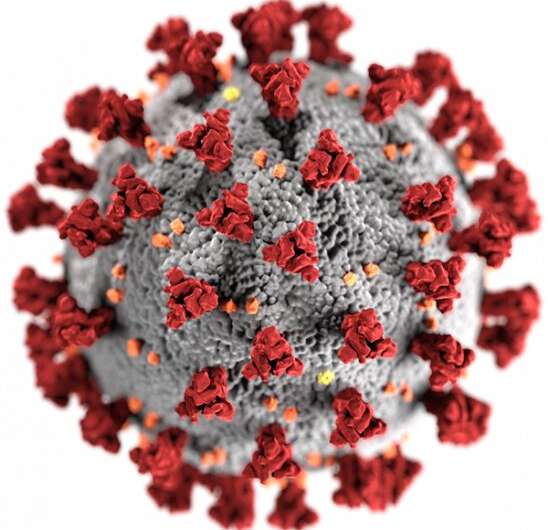Molecular mechanism for COVID-19 mortality identified

An enzyme with an elusive role in severe inflammation may be a key mechanism driving COVID-19 severity and could provide a new therapeutic target to reduce COVID-19 mortality. This finding by a team of researchers including Maurizio Del Poeta, MD, of the Renaissance School of Medicine at Stony Brook University, is detailed in a study published in the Journal of Clinical Investigation.
Researchers from the University of Arizona, in collaboration with Stony Brook University and Wake Forest University School of Medicine, analyzed blood samples from two COVID-19 patient cohorts and found that circulation of the enzyme—secreted phospholipase A2 group IIA, or sPLA2-IIA—may be the most important factor in predicting which patients with severe COVID-19 eventually succumb to the virus.
sPLA2-IIA, which has similarities to an active enzyme in rattlesnake venom, is found in low concentrations in healthy individuals and has long been known to play a critical role in defense against bacterial infections, destroying microbial cell membranes.
“The study supports a new therapeutic target to reduce or even prevent COVID-19 mortality,” said co-author Dr. Del Poeta, a SUNY Distinguished Professor in the Department of Microbiology and Immunology. “We identified a new blood marker that is highly elevated in severe and deceased versus mild or negative COVID-19 patients and built a decision tree using machine learning that will help clinicians on the predictability of dying from COVID-19. Because inhibitors of sPLA2-IIA already exist, our study supports the use of these inhibitors in patients with elevated level of sPLA2-IIA to reduce, or even prevent, COVID-19 mortality,” he explains.
When the activated enzyme circulates at high levels, it has the capacity to “shred” the membranes of vital organs, said Floyd (Ski) Chilton, senior author on the paper and director of the UArizona Precision Nutrition and Wellness Initiative housed in the university’s College of Agriculture and Life Sciences.
“It’s a bell-shaped curve of disease resistance versus host tolerance,” Chilton said. “In other words, this enzyme is trying to kill the virus, but at a certain point it is released in such high amounts that things head in a really bad direction, destroying the patient’s cell membranes and thereby contributing to multiple organ failure and death.”
“The idea to identify a potential prognostic factor in COVID-19 patients originated from Dr. Chilton,” Del Poeta said. “He first contacted us last fall with the idea to analyze lipids and metabolites in blood samples of COVID-19 patients.”
Dr. Del Poeta and his team, co-led by him and research assistant Jeehyun Karen You, collected stored plasma samples and went to work analyzing medical charts and tracking down critical clinical data from 127 patients hospitalized at Stony Brook University Hospital between January and July 2020. A second independent cohort included a mix of 154 patient samples collected from Stony Brook and Banner University Medical Center in Tucson between January and November 2020.
“Our study is especially timely given how the delta variant is contributing to rising COVID-19 incidence and hospitalization rates both in the US and worldwide,” said You.
The role of the sPLA2-IIA enzyme has been the subject of study for half of a century and it is “possibly the most examined member of the phospholipase family,” Chilton explained.
Source: Read Full Article
